Types of Content Marketing
What Are The Different Types Of Content Marketing?
There are many different types of content marketing, including:
- Blogging
- Video
- Podcasting
- Infographics
- Visual content
- Ebooks
- Lead magnets
- Whitepapers
- Slideshare presentations
- Quizzes/tools
- Checklists
- Courses
- Webinars
- Slide decks
- Free apps
- Social media content
And more.
Even in-person product demos, seminars, physical leaflets, and phone books can be considered types of content marketing.
The key is that the content provides valuable information or entertainment, usually for free, in support of a business goal.
(Even if that goal isn’t obvious at first glance.)
For example, here are four things that many businesses want to get out of their content marketing efforts:
- Driving traffic to key landing pages
- Spreading brand awareness
- Building relationships
- Bringing in revenue
- Generating social shares and backlinks
In fact, what you’re reading right now is content marketing.
We use this blog to build our audience with free content.

Then, cross promote sign ups for Semrush’s suite of SEO tools.
And every influencer on Instagram is doing (or attempting to do) content marketing in order to build an audience they can later monetize in some way.
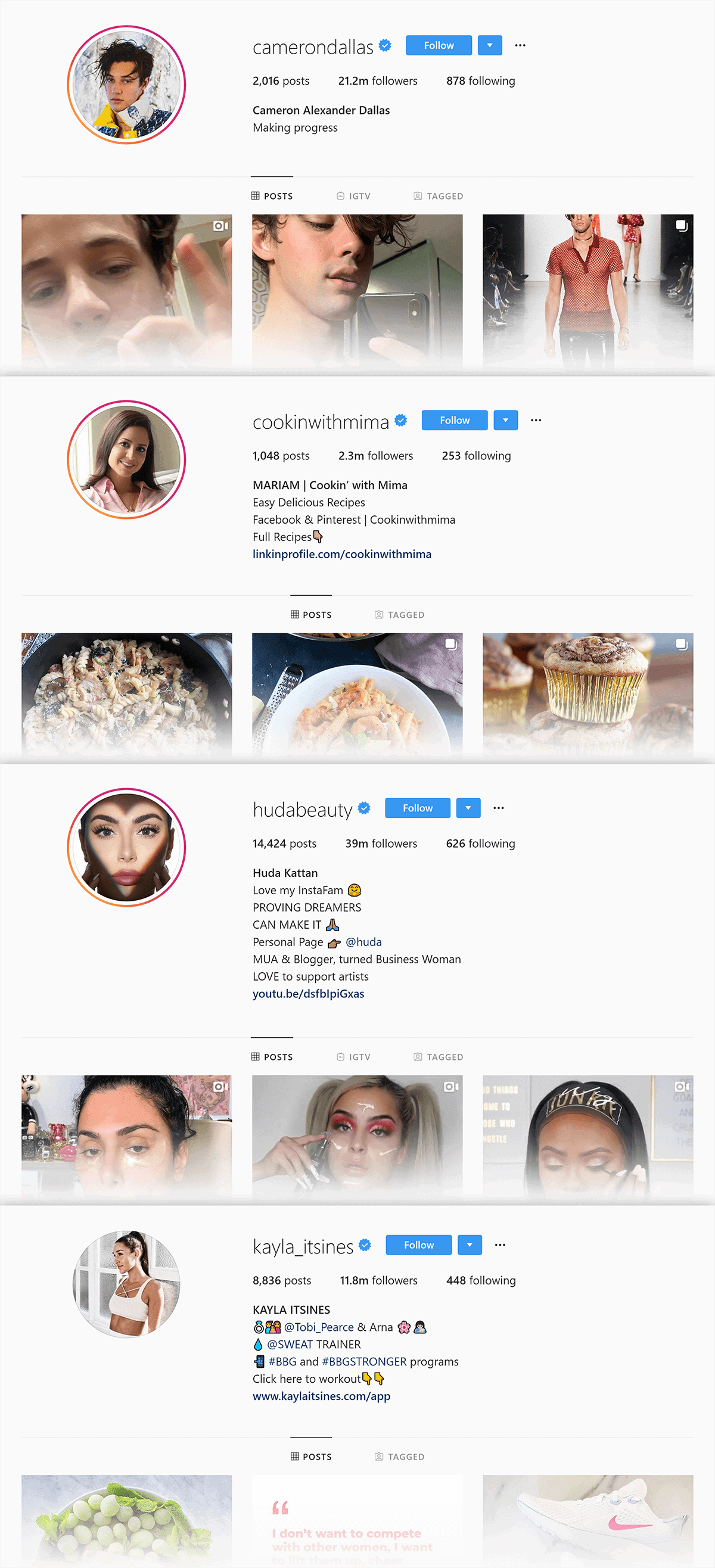
Why Use Different Types of Content Marketing?
When most people think about content marketing, they think of one word:
Blogging.
Blogging is great. It’s how Backlinko was built. But there’s no denying that other forms of content are growing super quickly.
Over the last two years, the podcasting world grew from 18.5 million episodes to 30 million.
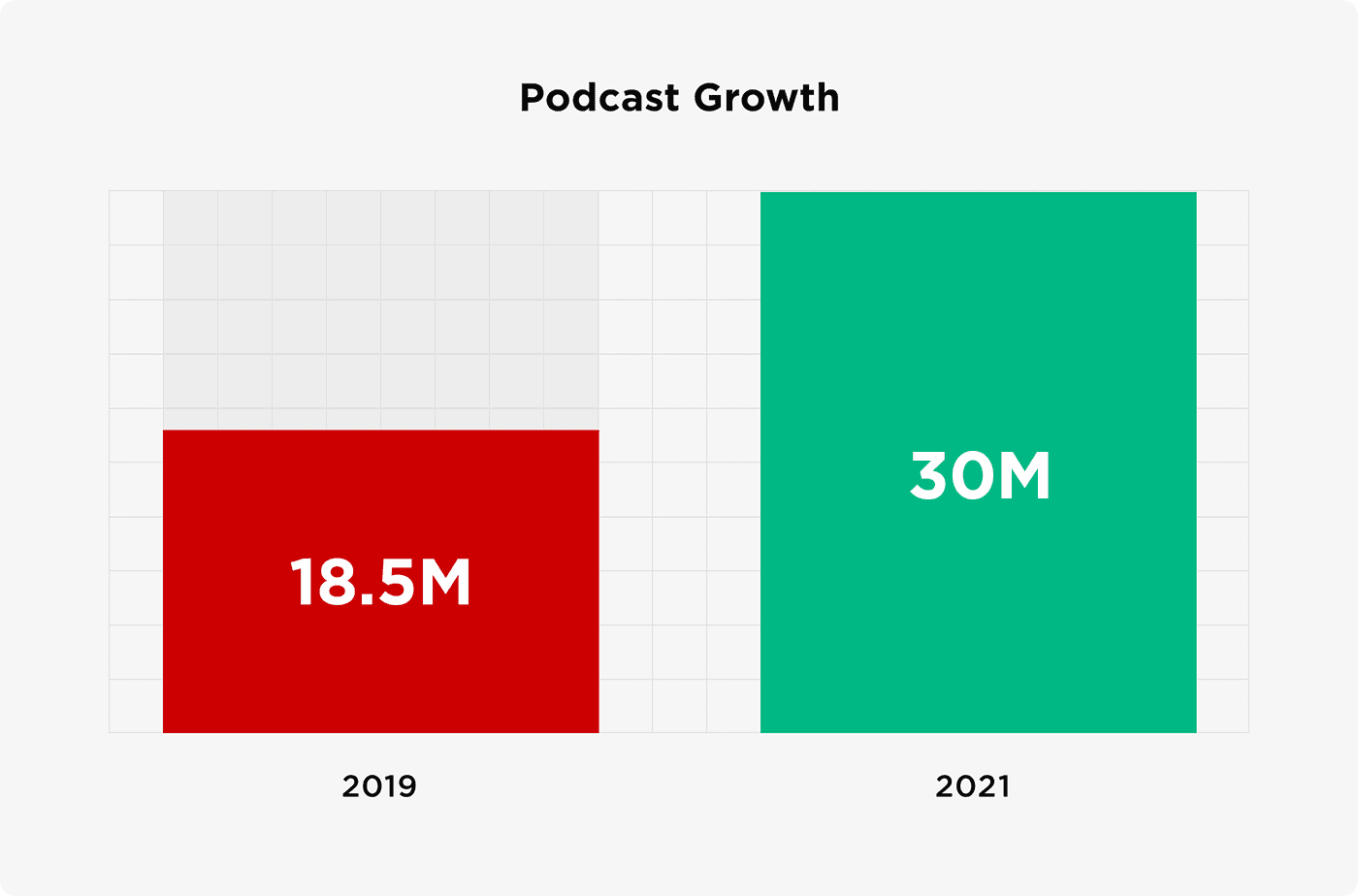
And YouTube gets billions of views every day.

So when you publish content in multiple formats, you can tap into those growing audiences.
Plus, publishing different types of content lets you be “everywhere” your audience spends time online.
For example, someone may not see your latest article when you share it on social media.
But maybe they’ll hear your podcast episode on their way home from work.
Plus, some things are just better suited to certain formats.
How would you prefer to learn to dance:
From a video or from a written article?
Best Practices
Decide On Your Primary Content Type
Your first step is to figure out what type of content marketing you want to focus on.
“Focus on” doesn’t mean that you need to ONLY create content using that one format. It’s just that this will be the content format that you put the most time, energy and money behind.
Here’s how to choose the best type of content marketing for you.
Choose a Format Ideal For Your Niche
Think about what format works best for the topics you want to cover.
For example, if you’re teaching karate, a podcast doesn’t really make much sense. But videos are PERFECT.
On the other hand, if you’re teaching people how to bake, you probably want to go with written recipes in the form of articles.
(Even though videos can work there too.)
That said:
Outside of obvious examples (like karate), there isn’t one “perfect” format for each niche topic. So I wouldn’t get bogged down on this step.
Just make sure that the format you choose fits with the topics you’re going to cover.
Use Formats That Your Audience Already Consumes
Does your audience spend all day and night on YouTube?
Grab a camera and start shooting videos.
In B2B? Text-based LinkedIn posts make more sense than Facebook Live.
Fortunately, you don’t need to guess what types of content your audience likes.
Check Reddit, Facebook Groups, or other places your audience hangs out online to see what they’re talking about.

You can also use Semrush Topic Research.
Just type in a keyword that describes the type of content you want to put out.
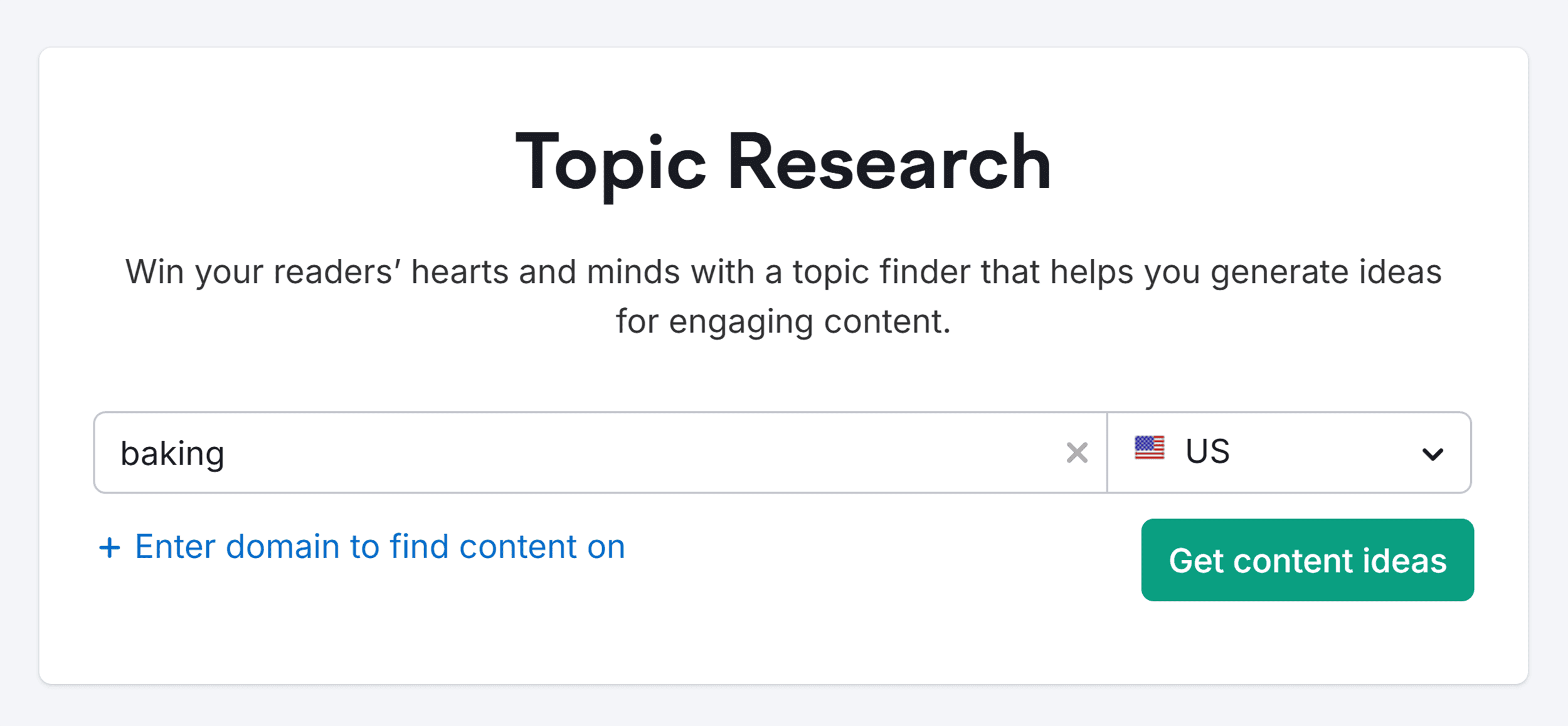
And check out the formats that tend to do best in your space.
For example, you can see that recipe posts tend to do really well in the baking niche.
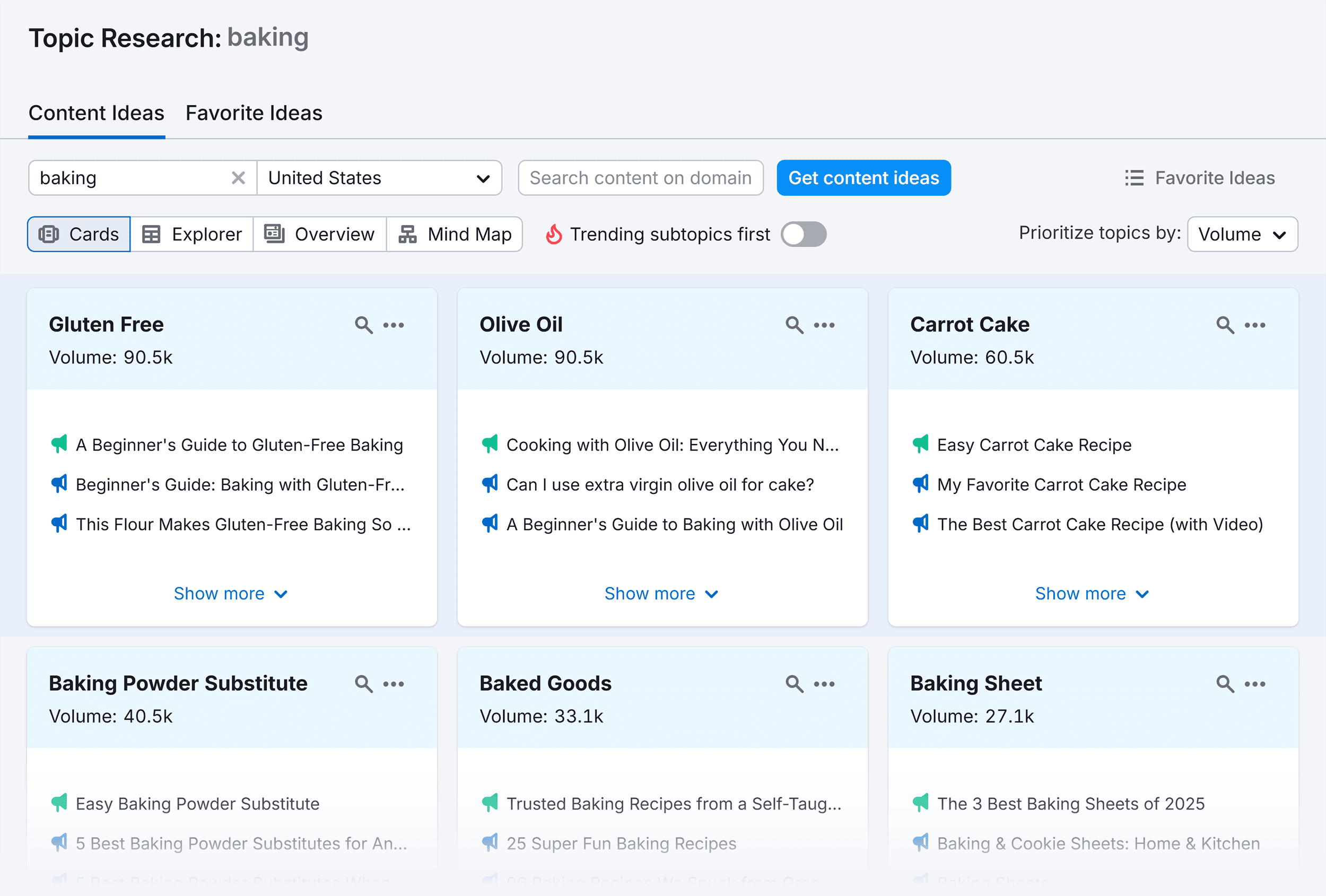
So if I was in that space, I’d consider making recipe posts my go-to content format.
Use Semrush to see what pieces of content in your niche are most popular.
Play To Your Strengths
At this point, you’re probably debating between a few different content marketing types to focus on.
So if you’re not sure which format to go with, I recommend choosing the format that works best for you and your team.
For example, before I started Backlinko, I worked for 3+ years as a freelance writer. And because I knew how to write for the web, I focused almost 100% on blog posts.
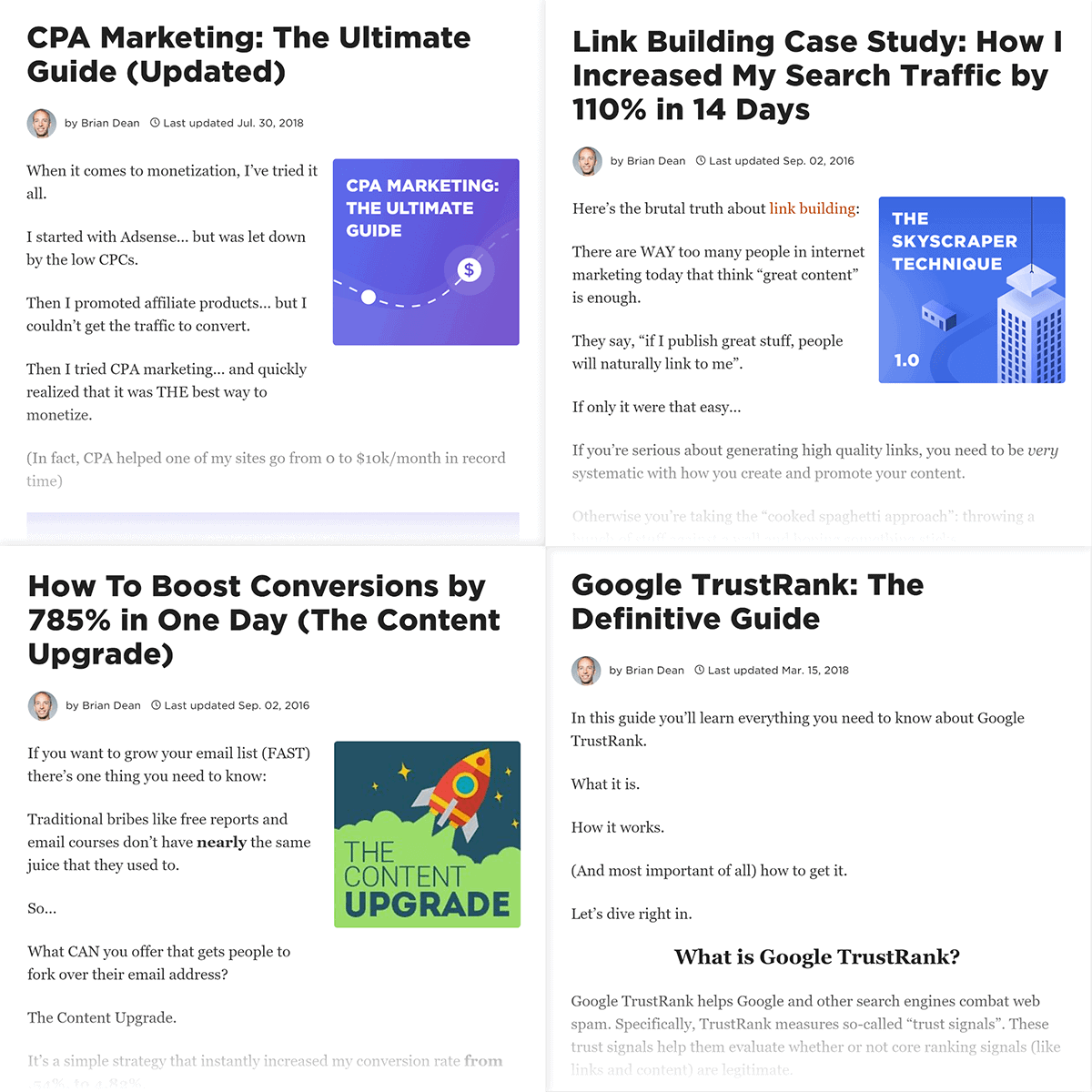
But other people are great at making videos. For example, Wistia tends to hire people with video production and editing experience.
So while they do publish some blog content, most of their stuff is video.

And because video plays to their strengths, the content they put out is REALLY good.
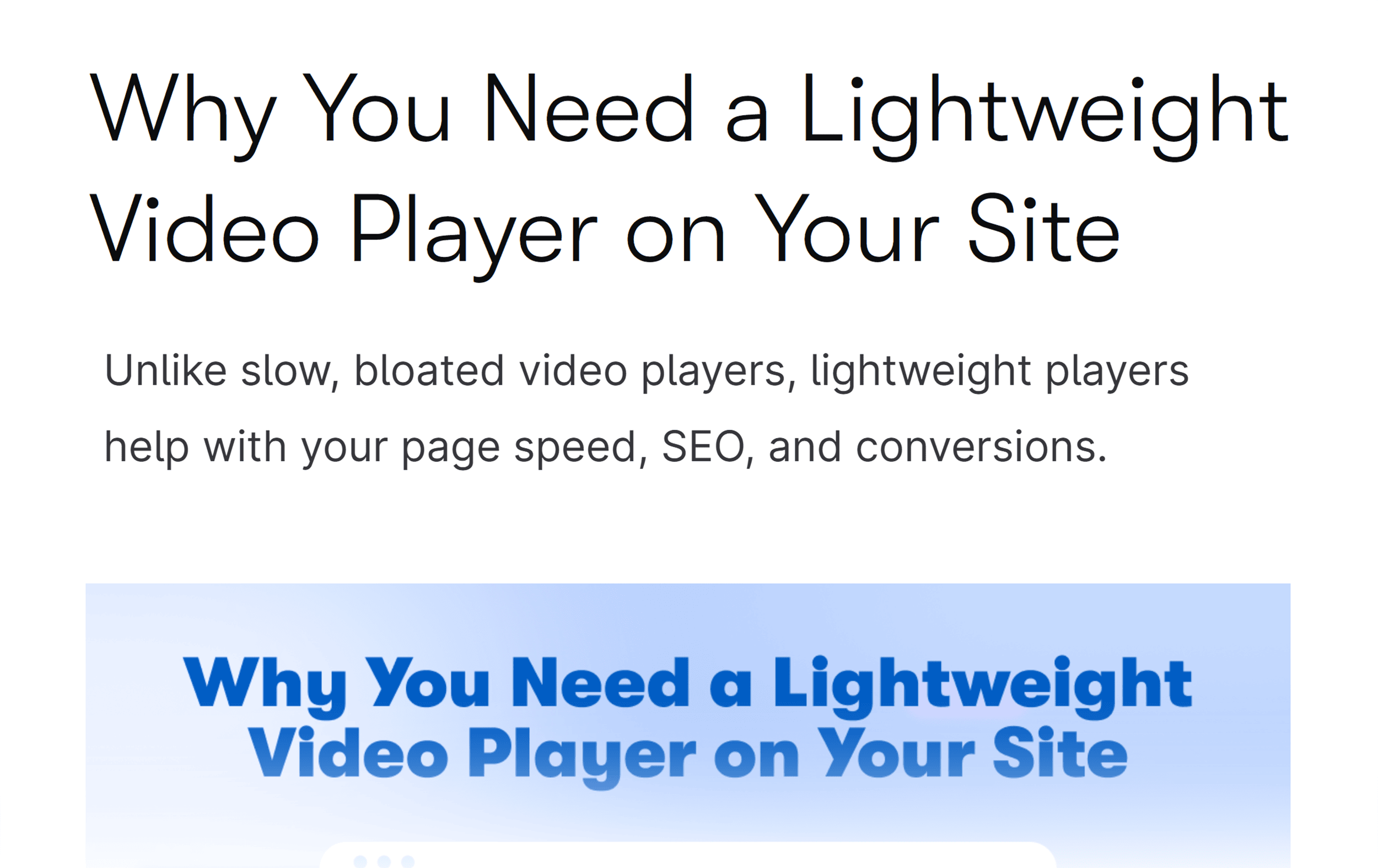
Double Down on Platforms That Your Audience Loves
Now that you’ve figured out what format to focus on, it’s time to figure out where you’re going to post your content.
Are you focusing on written content? Then you want to publish your content on your own blog, other people’s blogs (guest posting) and on places like Medium.
Are you publishing video content? Well, YouTube should probably be your go-to platform.
That said, you might also want to post your videos on sites like Twitch or Mixer.
Are you publishing workout tips for fitness freaks? Then you probably want to post your content on Instagram.
The bottom line here is that you want to share your content where your target audience already hangs out.
Streaming on Twitch.
Tweetstorms on Twitter.
Swimsuit pics on Instagram.
You get the idea 🙂
Regardless of your industry, there’s one platform that should at least be part of your marketing and content approach: Google.
According to Sparktoro, 63.4% of web traffic comes from Google.
Even though Google does occasionally feature videos in the search results…
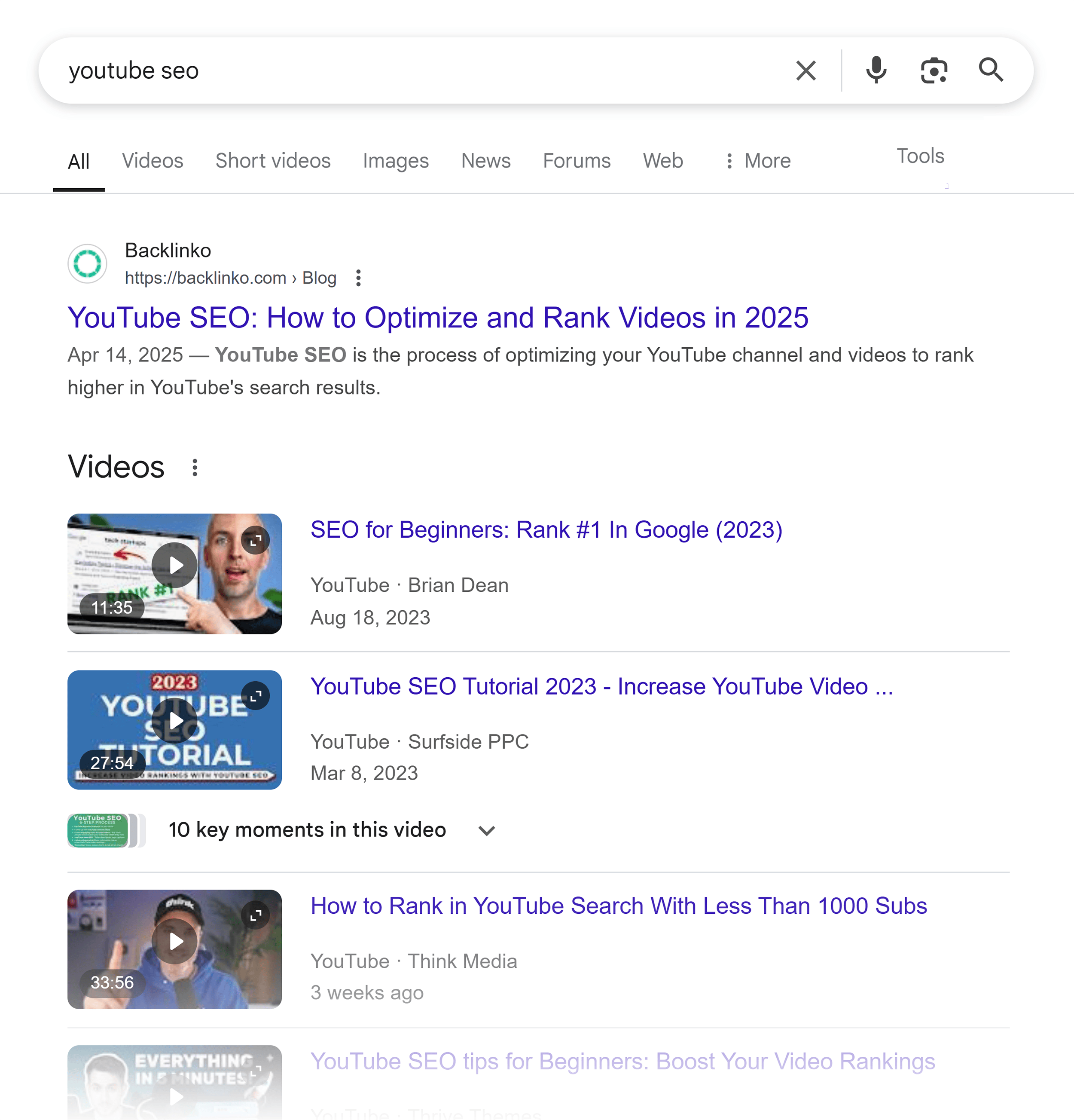
…most of their results are text-based blog posts.

So if you want to get traffic from Google, you need to put out super high quality blog content (and build links to that content).
Find Gaps In The Market
Yes, if your target audience listens to podcasts all day long, you should probably put a lot of time and effort into your podcast.
That said:
You might also want to choose formats that your competitors aren’t already active on.
(It’s like the old marketing adage: “go where they ain’t”.)
This might mean going “all in” on a platform that your competition doesn’t know about that.
Or using a format that’s not supersaturated.
For example, after my blog started to gain some traction, I quickly realized that there were VERY few people publishing videos about SEO.
There was Moz’s White Board Friday series, but that was about it.

So I decided to focus on creating high-quality videos about SEO and digital marketing.
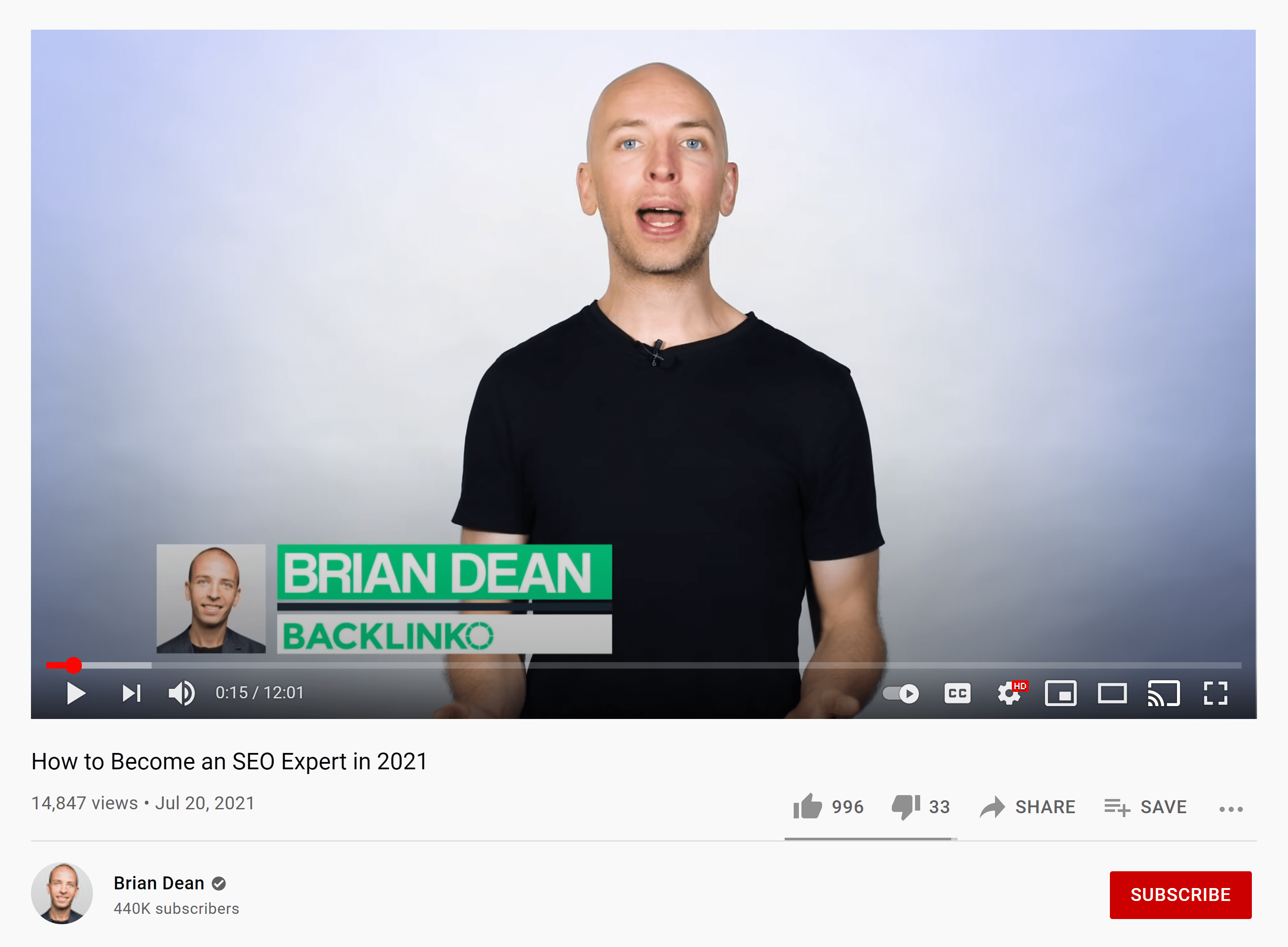
I posted some of these videos on my own site.

But my focus was on YouTube.

(Why YouTube? That’s where my target audience goes to learn stuff.)
And because I was pretty much the only one putting out professional SEO videos on YouTube, my view and subscriber count grew in record time.
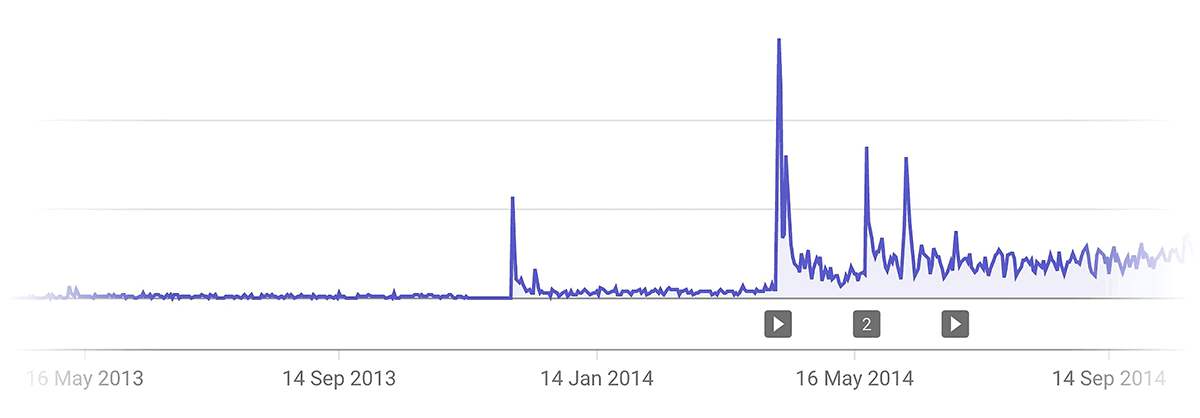
If I was in the gaming space, I’d consider launching a podcast. Or writing blog posts. That way, I wouldn’t have to compete with the thousands of gaming channels vying for attention on YouTube.
So if your competitors publish short articles, that’s an opportunity for you to create more long-form content.
If they’re publishing images, create videos.
If they’re creating lots of list posts, write case studies.
The big idea here is that you want to provide whatever is missing from your space.
Branch Out Slowly
Here’s a common mistake I see a lot of people make with their content marketing:
They already have a content format that’s working GREAT for them. And they figure: “If we’re already doing well with this format, why not jump into videos, podcasts, and Instagram stories. It will help us reach a completely new audience!”.
In theory, this SHOULD work.
But my experience, this approach spreads marketing teams way too thin. It’s really hard to try to learn the ins and outs of 5 different formats and platforms at the same time.
Instead, I recommend a “divide and conquer” approach.
With this approach, you move from the format you’ve already mastered to another format or platform.
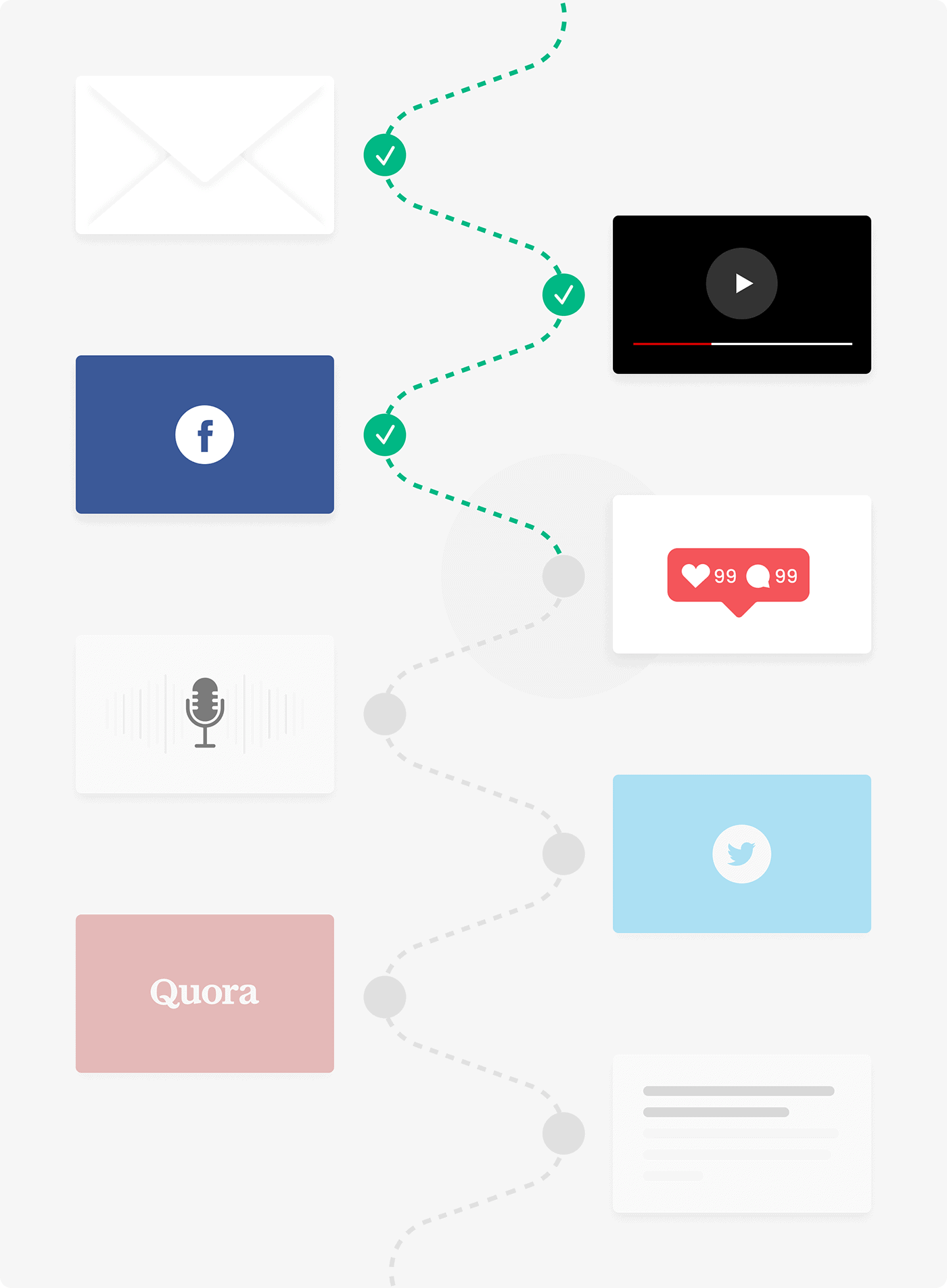
Then, you spend the next few months learning how that platform works. And putting in the time to build up an audience there.
And once you’ve figured out that format, branch out into another.
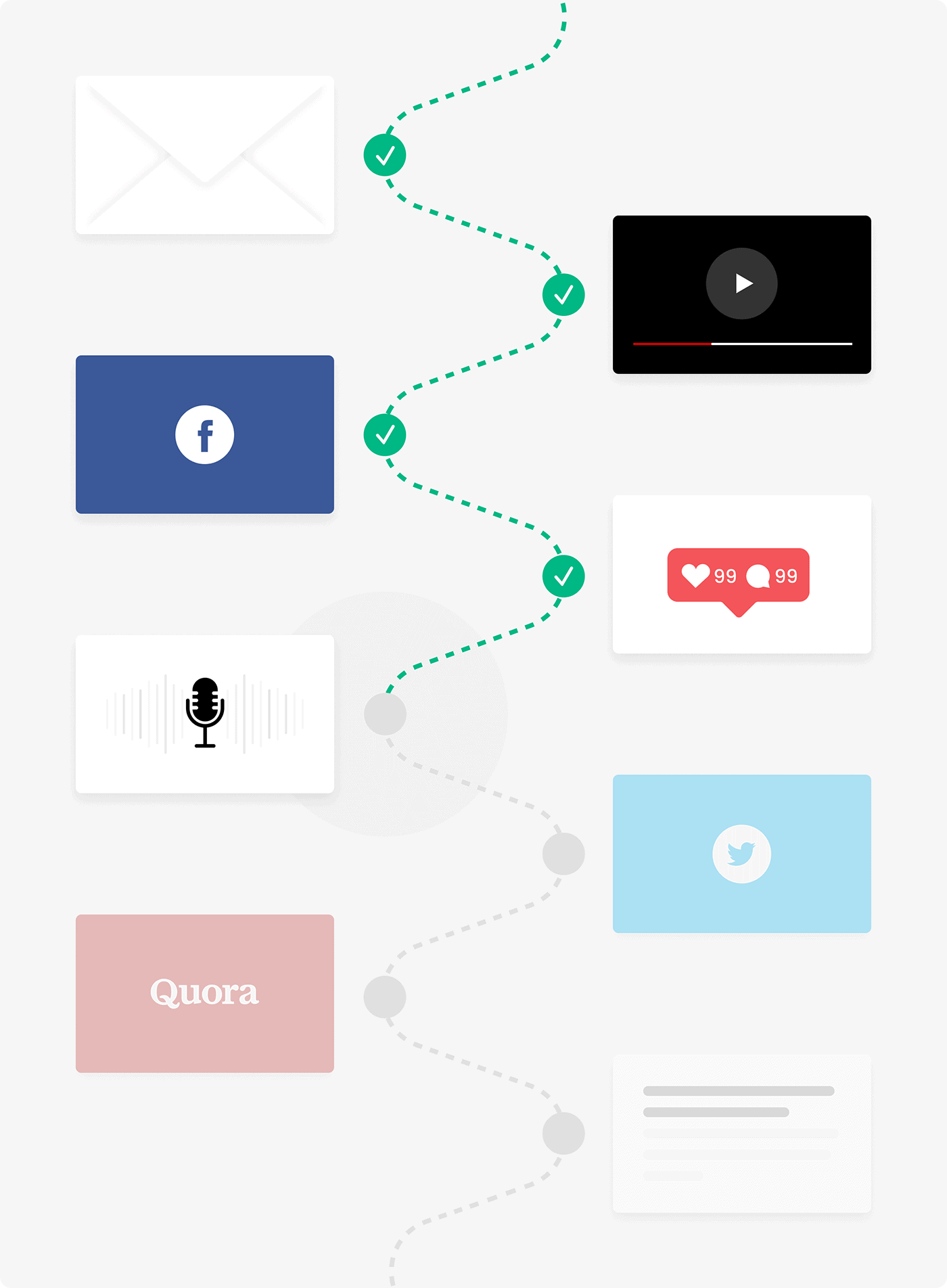
Continue this process over the course of a few years, and you’ll end up with a strong presence on multiple different platforms.

Something that rarely happens if you try to jump into 10 new platforms at the same time.
Repurpose Content Into Multiple Types
According to a survey by Orbit Media, bloggers that publish content on a regular basis report stronger results compared to those that publish infrequently.

But the good news is that you don’t have to reinvent the wheel for each new article, video, infographic, or podcast.
In fact, you can take one piece of really high-quality content and turn it into 2, 3, 4 or even 10 pieces of content.

(Also known as “Content Repurposing”.)
Not only do you get more value out of your content marketing efforts, but it’s an easy way to dip your toes into different formats.
You can:
- Turn articles into videos
- Turn videos into podcasts
- Turn podcasts into articles
- Turn articles into ebooks
- Turn ebooks into presentations
There’s only one caveat with Content Repurposing.
You can’t just copy and paste your content between formats. It won’t work. Every format and platform has its own wrinkles. And to succeed with content repurposing, you need to adapt your content for that format.
For example, a while back I published this video on my YouTube channel.
And I used the content from that video to create this list post.

Now:
I could have just copied and pasted the script that I used into a blog post. But I knew that a lot of the content in the video wouldn’t work as a text-based post.
For example, in the video I talk a little bit about how my YouTube channel took a while to get off the ground.
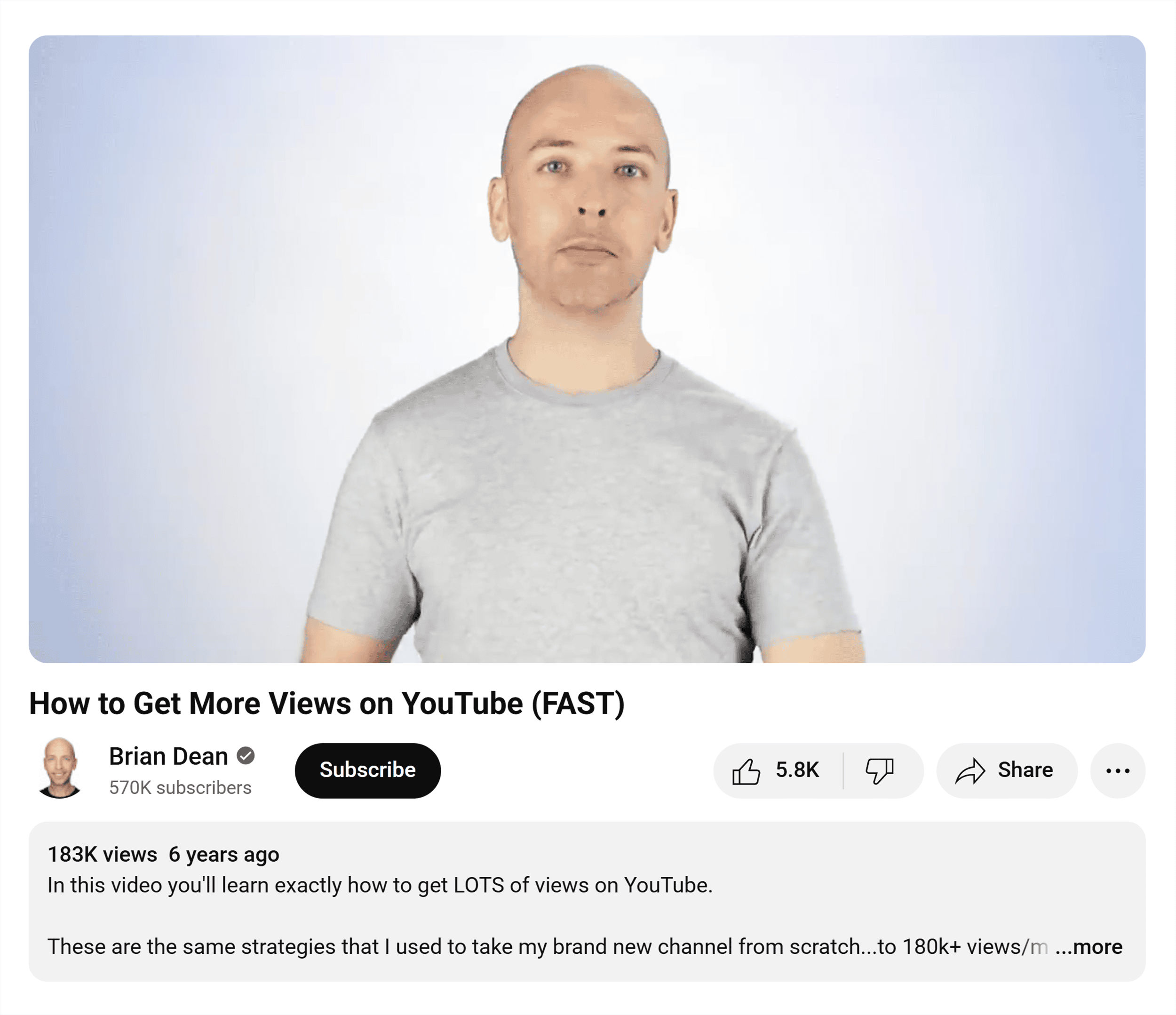
This kind of personal story is great for a video. But it’s not ideal for a blog post.
So I took that out of the post.
Instead, I jumped right into the first strategy.
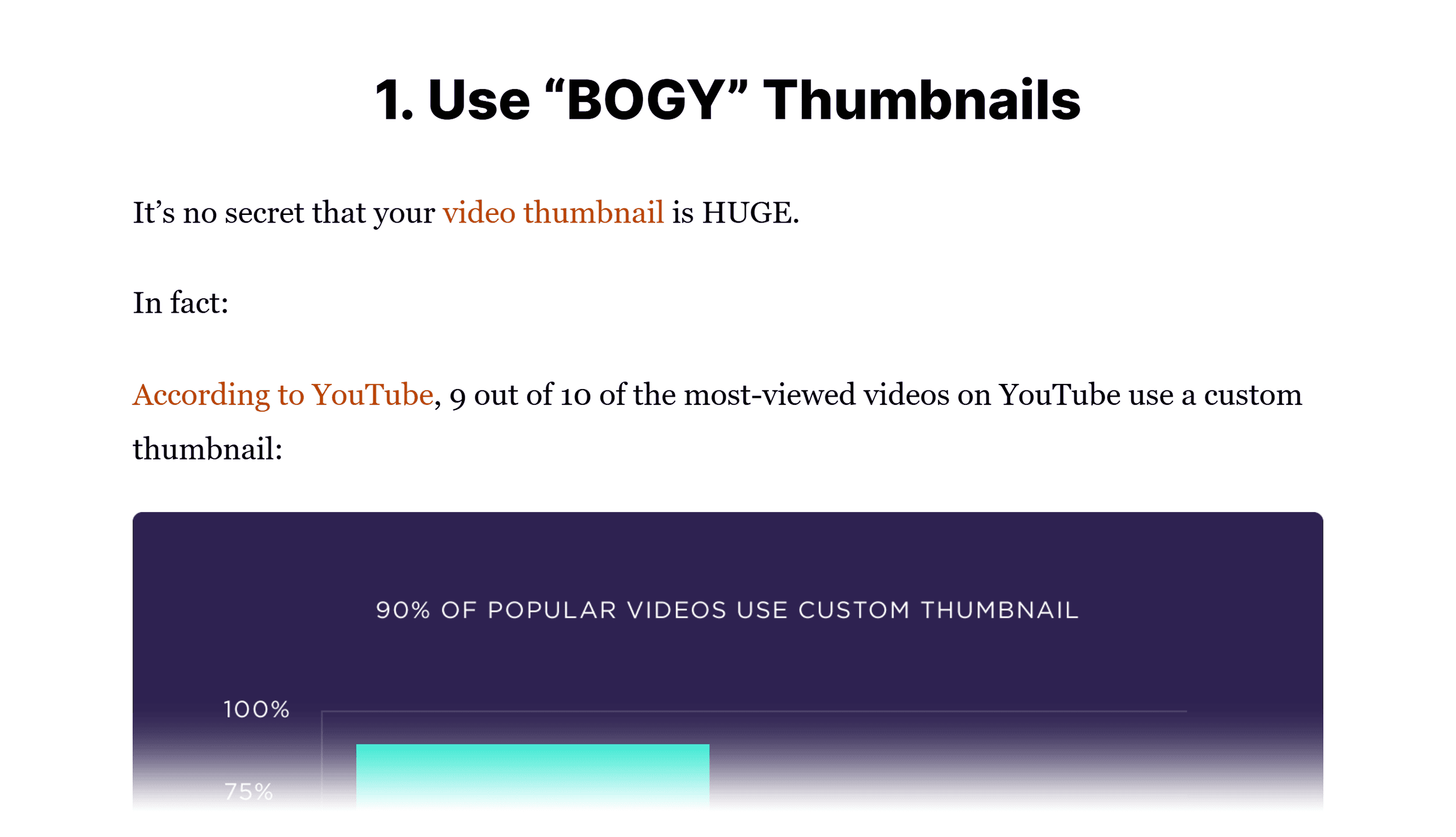
Also, my video only had about 10 strategies. And most list posts about “how to get more views” that were ranking in Google outlined 15-20 tips.

So I added in a few strategies that weren’t in the video.

That way, my post was more search engine friendly.
And because I adapted my content to the format.
And 4.5k+ shares on social media.
It also ranks on the first page of Google for several of my target keywords.

Learn More
Repurposing Content: An in-depth guide to repurposing content, including a ton of examples and mini case studies.
Content Strategy: How-to guide that shows you how to develop a content marketing strategy.
Quality vs. Quantity: Creating a Content Strategy: Excellent video that outlines which types of content marketing is working best right now.